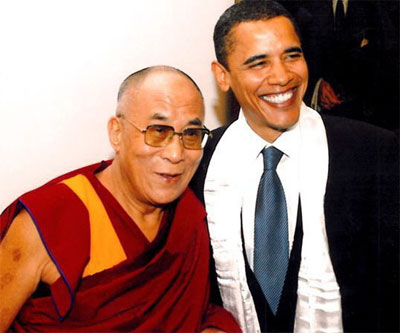
His Holiness the Dalai Lama Congratulates Barack Obama
Exploring definition of trend, in action, in the pursuit of the new.
“The works must be conceived with fire in the soul but executed with clinical coolness.”
Joan Miro
I’ve wondered about the concept of cool. What is cool? And what is coolness? I mean, really — what is supremely cool?
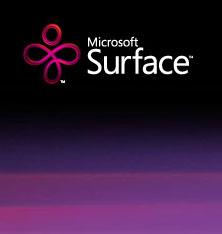
I was listening to Jolie Hellings, Marketing Brand Director, Microsoft Surface, and she referenced that — “the hunt for cool” — at an ESOMAR Brand Forum, in Paris.
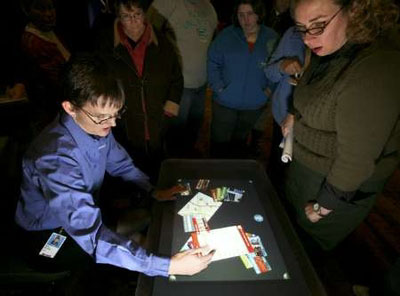
In building her teams and the cultural synergy therein, coolness is a requisite expectation. She and I were speakers at the ESOMAR Brand Forum. I talked about the trends that I’m seeing: in authenticity, in evolution, in truth, in heart fullness — brand soul. She lead a panel in exploring other outcomes in brand, research, testing and the culture of innovation that she manages at Microsoft.
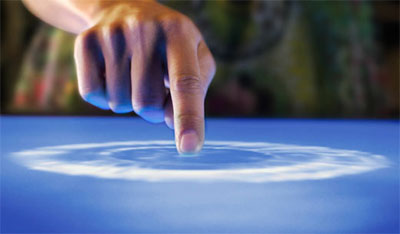
That got me thinking. What’s cool, anyway?
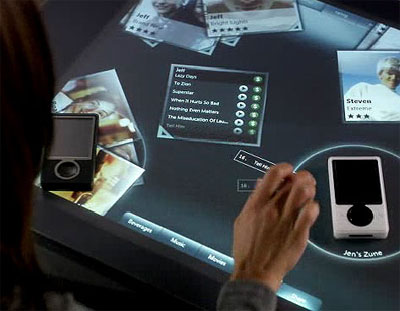
She and I spoke together, and shared other ideas in the celevration of brand, fire, passion and marketing captivation. Telling stories — and, as well, my hunt for True Brands. Microsoft Surface might be alignment with the idea of future cool. And during the event, the concept (of technological coolness) came up of the idea of “innovative” temperatures, the future, and the Minority Report.

That film is cool, but cold. Steven Spielberg intentionally shot it to maximize that character. Temperature might be a clue, as another has intoned — that heat is about passion, response to stimuli, activation; so cool, perhaps, is about restraint. And cool is surely about the comprehension of trend, the curve — globally or locally — that afflicts interest.
More so, how is that embraced, and what engagement, made? Actually, there’s a deep history, interestingly enough. And the concept of coolness goes back, and is, as well, widely influenced by other cultural influences that have infected our appetites for the right “temperature.”
What I’m thinking, to the concepts of cool:
Everyone has their own cool(ness).
A person might be living in what they think is their own cool. Cool can be an aspiration — the person isn’t there, but getting there — hope fully.
Cool is about resonance — as a trend, as a meme, it’s got to circulate; there needs to be resonation. The vibe is right, in cool. And supremely — relevance. There is a presumption that cool is now, it’s relevant, it’s needed, and it fills the “hole” of something. Living in cool is being free in your own place of identity.
Those are some opening ideas and observations.
But I’m sure you’ve got more ideas about your personal impression of cool.
Cool.

One can reach out, and explore more — and did.
And to that end, what’s hot, and what is heat?
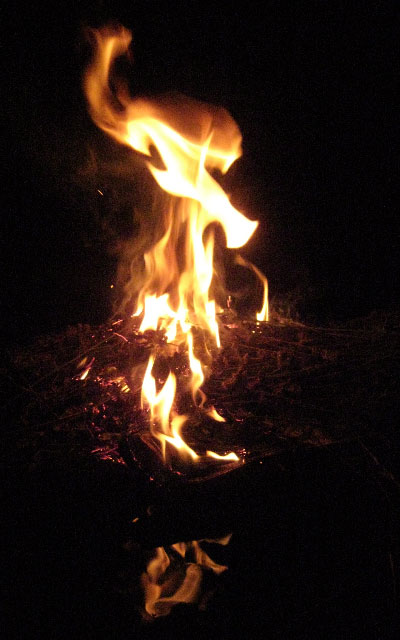
If something is cool, or something is hot, then what of warm, or cold — searing, or freezing?
“That’s scalding.”
or
“That’s sub-zero.”
Molten. Ice age. Volcanic. Permafrost.
I suppose that these allegories to temperature are relevant to precisely that — an analogy of positioning. That’s defined by heat — you’re either hot, or you’re not, you’re cool.
Cool = serenely disengaged.
Hot = passionately connected.
An intriguing etymology, there.
Of course, digging in is my game. Go forth: find the root, the etymon. What found, then?
cool
O.E. col, from P.Gmc. *koluz, from PIE base *gel– “cold, to freeze.” The v. form kele (from O.E. colian) was used by Shakespeare, but has been assimilated with the adj. into the modern word. Applied since 1728 to large sums of money to give emphasis to amount. Meaning “calmly audacious” is from 1825. Slang use for “fashionable” is 1933, originally Black English, said to have been popularized in jazz circles by tenor saxophonist Lester Young. Coolant in the radiator sense is from 1930. Coolth, on model of warmth, is occasionally attested since 1547, and was used by Pound, Tolkien, Kipling, etc.hot
O.E. hat “hot, opposite of cold,” also “fervent, fierce,” from P.Gmc. *haitoz (cf. O.Fris. het, O.N. heitr, Du. heet, Ger.heiß “hot,” Goth. heito “heat of a fever”), from PIE base *qai– (cf. Lith. kaistu “to grow hot”), the same root as that of heat. Taste sense of “pungent, acrid, biting” is from 1548. Sense of “exciting, remarkable, very good” is 1895; that of “stolen” is first recorded 1925 (originally with overtones of “easily identified and difficult to dispose of”); that of “radioactive” is from 1942. Hot air “unsubstantiated statements, boastful talk” is from 1900. Hot potato in figurative sense is from 1846. Hot-blooded “passionate” (1598) is a relic of medieval physiology theory. The association of hot with sexuality dates back to 1500. Hot rod first recorded 1945 in Amer.Eng.; hot water “trouble” is from 1537. The hot and cold in hide-and-seek or guessing games are from hunting (1648), with notion of tracking a scent. Hot spot “night club” first recorded 1931. Hotshot “important person” is from 1933; it earlier meant “fast train” (1925).
There’s a train there, to coolness, slowness, calmness…. So cool is about that sense of serenity in surveillance. And what is the contrary — to hot — it’s about passion, the impassioned and the intoxication of heated encounters — of mind, of body. Heat and fever — linked to an ignited intensity of experience. But, too, it’s a complicated grouping of emotions and sensations — if, for example, you consider the ideas of exploring definitions, as above, there are more than 35 varying renderings here: http://dictionary.reference.com/browse/cool.
But, in the range of the work that I do, what we explore, the notion of trends and implications of attention, attunement, captivation, emotively binding, engagement, enthrallment, magnetism are part of our daily ritual. We have (as strategists and designers) to know those bridges, to speak (brand strategy and design) to anyone.
If you are exploring the concept of literally gaining the focused attention, even for an instance, of anyone that you, your friends, your community, your brand, your enterprise are trying to engage, you’ve got to know the language of enthrallment. And that language is not only sensual, but visible — as well as psychic. The cusp of psychic reference is not only the memory, but instinct and intuition; it’s the soulspot of connectivity. You reach into the mind of memory and the fertility of instinct to capture the sense of trend in the visible and sensate language of experience. Cool lives there. And being mimetic, it only lasts for the moment of registry.
Cool what? Obamacool. So, for example, in referencing the campaign of President-Elect Barack Obama — and the subtle mnemonic connections — to previous visualizations and brand strategies (other eras, other alignments):
 < Obama — now
< Obama — now

Franklin D. Roosevelt, then: 1937.
Bold, simple, powerful — and typographically reminiscent of a recalled “dilemma” of the past and the understanding of the gravity of our current state of affairs. It’s about captivating a sense of instinct and reactiveness that might be born in experiences from another time. There’s a recollection of something that reunited the US populace during earlier times of significant travail. Some might have actually had this connection, others might not have. If anyone has any visibility on the history of graphic design, in the US, or internationally — there will be a mimetic connection. There’s a look. And it’s cool. Obviously, millions believe in the package and that authentic packaging that delivered it.
So too, snowboards and surfing equipage, the revolving evolution of television and broadcast design, product innovations (modernist fluidity could be, for example, mimetically connected to futurist design of the ’20s, the ’30s, the ’50s). Architecture, as well — though, perhaps, to a lesser degree. There’s a resurgence and recalling of visual and formal trend that bespeaks the renewal of cool — and what is cool then, somehow becomes cool again. Being a designer of more than three decades, I’ve seen the trend of cool (what is it?) come and go, and come back again.
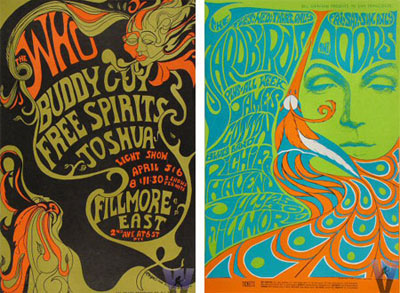
Psychedelia, for example, might be distinctly linked to the character of the tendrilled design baroque of the current “devolving” campaigns of the present. You know the look. Bloomingdale’s | 2008 uses this grouping of elements for its current theming:

Hot rod design of the ’50s and ’60s is re-birthed in the globally “cool” rendering of Don Ed Hardy and Christian Audigier. I might offer, as well, that the trend of flaming eyeballs and scorched firestrokes could be a trend that found life in Tibetan Buddhism.
Contemplating all this, I wonder of others. More explorations on the trend of coolness, in the myriad attitudes of others:
“It seems like once people grow up, they have no idea what’s cool.”
![]() Bill Watterson (American Author of the comic strip Calvin & Hobbes, b.1958)
Bill Watterson (American Author of the comic strip Calvin & Hobbes, b.1958)
“Elves are cool, man”
![]() Orlando Bloom (English Actor, b.1977)
Orlando Bloom (English Actor, b.1977)
“If I can stop one Heart from breaking
I shall not live in vain If I can ease one life the Aching
Or cool one Pain
Or help one fainting Robin
Unto his Nest again
I shall not live in Vain”
![]() Emily Dickinson (American Poet, New England mystic, 1830-1886)
Emily Dickinson (American Poet, New England mystic, 1830-1886)
“One cool judgment is worth a thousand hasty counsels. The thing to do is to supply light and not heat.”
![]() Woodrow T. Wilson (American 28th President of the United States 1856-1924)
Woodrow T. Wilson (American 28th President of the United States 1856-1924)
“Nothing gives one person so much advantage over another as to remain always cool and unruffled under all circumstances.”
![]() Thomas Jefferson (American 3rd US President (1801-09). Author of the Declaration of Independence. 1762-1826)
Thomas Jefferson (American 3rd US President (1801-09). Author of the Declaration of Independence. 1762-1826)
“Let the bucket of memory down the well,
bring it up. Cool, cool minutes. No one
stirring, no plans. Just being there.”
![]() William Stafford
William Stafford
“Let your soul stand cool and composed before a million universes.”
![]() Walt Whitman (Poet, 1819-1892)
Walt Whitman (Poet, 1819-1892)
“All women do have a different sense of sexuality, or sense of fun, or sense of like what’s sexy or cool or tough.”
![]() Angelina Jolie (American Actress, b.1975)
Angelina Jolie (American Actress, b.1975)
“Mrs. Lindsay – ‘You certainly look cool.’ – Yogi Berra – ‘Thanks, you don’t look so hot yourself.'”
![]() Yogi Berra (American professional Baseball Player and Manager, b.1925)
Yogi Berra (American professional Baseball Player and Manager, b.1925)
“It’s just like when you’ve got some coffee that’s too black, which means it’s too strong. What do you do? You integrate it with cream, you make it weak. But if you pour too much cream in it, you won’t even know you ever had coffee. It used to be hot, it becomes cool. It used to be strong, it becomes weak. It used to wake you up, now it puts you to sleep.”
![]() Malcolm X (American black militant leader 1925-1965)
Malcolm X (American black militant leader 1925-1965)
The spread of coolness is more. There are other forms of reckoning — where, for example, might the cool, come from:
- The African aesthetic and coolness.
- The hip cool, of the Avant-garde.
- Britannia cool.
- Jazz coolness.
- Itutu cool (African gentle cool).
- Sprezzatura (Italiacool).
- Anti-cool: squareness.
- Zen cool | spiritual cool.
- Robotic cool — automaton coolness.
- Sang-froid — cool(est) blood (or cold-blooded).
And more, to what others think.
Cool definitions, added:
- “Cool is a knowledge, a way of life.” -Lewis Macadams
- “Cool is an age-specific phenomenon, defined as the central behavioural trait of teenagerhood.” -Marcel Dansei
- “Coolness is the proper way you represent yourself to a human being.” -Robert Farris Thompson
- In the novel Spook Country by William Gibson, one character equates cool with a sense of exclusivity: “Secrets,” said the Bigend beside her, “are the very root of cool.” -Terry Pratchett
- “The Monks of Cool — in their passing-out test a novice must select the coolest garment from a room full of clothes. The correct answer is, “Hey, whatever I select,” suggesting that cool is primarily an attitude of self-assurance.” -Terry Pratchett
Am I getting there, I wonder? Am I getting closer to cool — the definition of cool, the trend of the newest, the best, the brightest?
There’s another telling, that’s perhaps the most telling, and perhaps, in a way, truly captures the spirit of cool.
‘Mystic coolness,’ is considered one of three pillars of a religious philosophy created in the 15th century by Yoruba and Ibo civilizations of West Africa. According to Robert Farris Thompson, coolness, or Itutu, purported meanings of conciliation and gentleness of character, of generosity and grace, and the ability to defuse fights and disputes. It also was associated with physical beauty — a kind of gorgeous cool.
In Yoruba culture, Itutu is connected to water, because to the Yoruba the concept of coolness retained its physical connotation of temperature. His review cites a definition of cool from the Gola people of Liberia, who define it as the ability to be mentally calm or detached, in an other-worldly fashion, from one’s circumstances, to be nonchalant in situations where emotionalism or eagerness would be natural and expected. Joseph M. Murphy, another scholar of African spirituality and culture writes that “cool” is also closely associated with the deity Òsun of the Yoruba religion.
There are psychological framings, as well, that suggest that cool is a matter of maturity, calmness in finding other paths of vista. Stand away from the crowd, you see more… The older you are, the cooler you are. And being cool, is being contrary to the popular. I like that, of course.
Supporting outlines and I paraphrase:
Mark Gorkin | The “Seven Purposeful, Passionate and Playful Dynamics of Contrarily Hip and Creative Thinking”:
“1. Question the Conventional or Expressively Disrupt the Commonplace or Status Quo. Oppositional thinking often takes on tired and true assumptions and mindless habits. It often challenges authority or “the way it’s always been” tradition. And the more high-minded the principle or inflated the ego, the greater the incentive to skewer the rigid and/or self-righteous. Perhaps von Oech, in his book, Whack on the Side of the Head, said it best (or, at least, came up with a hipster mantra): “Sacred cows make great steaks.”
In addition to challenging authority and convention, creative and hip people often need to express their genuine individuality. Their desire goes beyond just a need to be contrary or different. These individuals need to hear and are not afraid to follow the beat of their uncommon inner drummer. In fact, Edvard Munch, the great 19th century Norwegian painter, best known for his famous work, “The Scream,” claimed that his anxieties and neuroses actually gave him direction and a sense of purpose. Without his inner demons he would have been lost. (Cool as disruption.)
2. Seeing Spatial-Psychological Relationships, Including Both Sides to Achieve Multiple and/or Mature Perspective. By definition, oppositional thinking means you are aware of some existing premise or position and that you are thinking in comparative and contrasting terms. For example, free-associating on a word test with an opposite term means you are not just reacting subjectively or spontaneously. Actually, you are anchoring both words in some kind of cognitive, psychological and/or spatial-temporal relationship, i.e., above-below, before-after, front-back, etc. (Cool as insight in consistently framed multiple perspectives.)
3. Generate a Broader and Deeper, a More Novel and Complex Perspective. As a way of delving into this enriched oppositional perspective…. While I don’t have conclusive evidence, I suspect hip or creative-types tend to live in multiple worlds. To draw on an observation by acclaimed 20th century English author, John Fowles (The Collector, The Magus, The French Lieutenant’s Woman, etc.), as a writer the past is his electric current; he needs to be plugged into this power source. (Cool as seeing differently, big.)
4. Perceive Shades of Gray. If you can see a connection between black and white, perhaps you can even see these two hues yielding a mix of gray. Or perhaps you can envision partly overlapping black and white circles (a Venn Diagram), so that now there’s a section of gray sandwiched between black and white crescent-shaped moons.
This visualization can help illuminate how the color gray or, for example, consensus forged from contradictory positions, is a product of creating common ground or overlapping space between oppositional black and white positions or figures. The philosopher and educator, John Dewey, captured the fertile ground of possibility in conflict and contradiction: Conflict is the gadfly of thought. It stirs us to observation and memory. It shocks us out of sheep-like passivity. It instigates to invention and sets us at noting and contriving. Conflict is the sine qua non of reflection and ingenuity. (Cool sight into the patterned layering of complexity.)
5. Stimulate Creative Confusion. Frequently, it’s not an easy task relating and reconciling opposition. Finding common ground or perceiving analogous properties or similarities between things seemingly unlike may take a keen or clever mind. In fact, according to renowned author and humorist, Mark Twain, this cognitive agility is the essence of “wit”: the sudden marriage of ideas which before their union were not perceived to have any relation.
With Twain’s definition in mind, what I’m about to say may seem counterintuitive: “A-has!” don’t just happen. Grappling with contradiction often generates an initial conceptual mind field of uncertainty, confusion and frustration. The psychiatrist, Richard Rabkin, called this state “thrustration”… — being torn between thrusting ahead with direct action and frustration, as you have not been able to put together all the pieces of the puzzle.
Of course, to see and think anew not only means getting out of the box; sometimes the box may have to be knocked down or blown up. As one of the giants of 20th century art, Pablo Picasso, observed: “Every act of creation is first of all an act of destruction.” (Cool as promoting confusion to arrive at newly identified solutions.)
6. Reveals a Paradoxical or Higher Truth. If being hip or clever often involves the capacity for irreverence and insight… then I have one pithy example… –basically you need to understand the difference between “holiday blues” and “holiday stress.” Once again, grappling with seemingly contradictory tendencies actually reveals an aspect of your nature and, more broadly, of human nature.
Or consider this perceptive observation of human need and motivation by the pioneering film genius, Charlie Chaplin: A paradoxical thing about making comedy is that it is precisely the tragic which arouses the funny. We have to laugh due to our helplessness in the face of natural forces and in order not to go crazy.
Grappling with opposition was essential to the theorizing of the renowned 19th century German philosopher, Friederich Hegel. Hegel posited that a starting point or position — a “Thesis” — when contrasted with its opposite — an “Antithesis” — can generate sufficient tension to yield a higher order concept or integrative “Synthesis.” (Coolness in seeing the evolved synthesis, in the conflicted resolution of multiple idea(l)s.)
7. Encourage Daring and Defiance. Clearly, with an oppositional predisposition to question the conventional, self-righteous or status quo and/or armed with a “higher truth”.”
(Coolness is courage.)
Of course, I can’t suggest the idea that I’ve truly defined what cool is — who can? Perhaps you? But, to trend, design, brand and story, there is a pattern. But what I’d propose is that cool, by virtue of the opening metaphor of temperature, is about new composure. And there’s a shift between the sense of heat, and the experience of coolness. That heat implies the passionate craze of inventive expression, wildly engineered. And that cool is seeing new things because of the calmed complexity of seeing — in that state of serenity — things in a new way. That incisive observation creates new visioning.
Cool is calm.
Cool is composed.
Cool is composure.
And that position, finally, frames here:
compose
1475, from O.Fr. composer “put together, arrange” (12c.), from com– “with” + poser “to place,” from L.L. pausare“to cease, lay down,” ult. from L. ponere “to put, place”compose. Meaning infl. in O.Fr. by componere composite. Musical sense is from 1597. Composed “calm” is from 1621; composure first recorded 1667.
“Maybe you are the ‘cool’ generation. If coolness means a capacity to stay calm and use your head in the service of ends passionately believed in, then it has my admiration.”
Kingman Brewster, Jr.
tsg | p a r i s | FR
References:
http://www.thecoolhunter.net/
http://en.wikipedia.org/wiki/Cool_(aesthetic)
http://en.wikipedia.org/wiki/Robert_Farris_Thompson
http://www.listafterlist.com/tabid/57/listid/13250/Personalities/Top+100+Coolest+People+in+the+World.aspx
http://www.coolhunting.com/